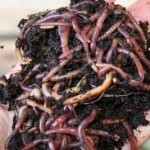THIS WEEK’S FRUIT
Gold Dust peaches
A sweet and fragrant peach that’s ripe enough to drip juice down your chin is one of the joys of summer. The Gold Dust is one of our favorites and the first outstanding peach of the season for eating out of hand. An heirloom variety, it is low in acid and smaller than most of our peaches. Its juicy, melting texture and sweetness can hardly be beat.
Golden Sweet Apricots
Following on the heels of the Robadas, the Golden Sweet is a smaller apricot that makes up for whatever it lacks in size with its rich flavor. Though we may bake pastries featuring other varieties, the Golden Sweet is our variety of choice for our best-selling apricot conserve. Another California born and bred variety, it has a brilliant golden orange skin with a soft blush.
Cot-n-Candy Apriums
This is the first year we are picking these white apriums developed by Floyd Zaiger. Characteristic of white fleshed stone fruit, these apriums have a more subtle sweetness than orange varieties, but with notes of honeydew, they are sure to please. These delicate fruits bruise easily, so handle with care.
Jade Nectarines
Another white fleshed variety, Jades are very sweet due to their low acid and have a fabulous melt in your mouth quality. One of Farmer Al’s new favorite midnight thirst quenchers – Jades are very delicate and juicy, so have a napkin and handle with care.
A Note From Our Science Dept.
It was 5:30 early Monday morning. Farmer Al was getting ready to apply his latest pile of
compost to his apricot trees. This compost was made by beneficial bacteria, fungi, protozoa and other beneficial microorganisms that Farmer Al had hired several months ago. He fed them a great diet of wood chips made from the pruning of FHF trees, spoiled fruit, coffee grounds and other goodies. In return the microorganisms worked day and night and produced in a matter of months a fungally dominated compost that could be used to return all the nutrients that the fruit had used back to the soil under the fruit trees.
As Farmer Al was about to apply the compost, he was greatly disturbed by all kinds of noises emanating from the compost pile. Highly annoyed, he took out his trusted microscope and decided to take a look at all the commotion. What he saw under the microscope was unbelievable: hundreds of emails were shooting around like electrons between the compost pile employees and the Worm Café employees just hired at FHF. Using the 400X magnification, he started reading the emails. Here are some excerpts of what he read.
An email signed by the Compost Beneficial Microorganisms from compost pile #15 was
addressed to the Worm Café residents. This heated email (with a temperature of 130 to 140
F) demanded to know who were these “earthworms”, what they were doing at FHF, why did
they obtain special and priviledged housing on FHF property and why they were being fed a
diet of “cakes and cookies” similar to the one given to the Compost Beneficial Microorganisms. The letter concluded with an accusation: “why are you stealing our jobs?”
A cool, calm collected response (about 65 to 90 F) from the Worm Café was spotted under
bright field optics by Farmer Al. The Worm Café residents were resentful to be called mere
earthworms. They identified themselves as compost worms (Eisenia being the family name)
which decompose organic material much faster than earthworms. They were not in competition
with the compost microorganisms and they were not out to steal their jobs. However,
the compost worms explained that they were good at eating fruit residues and coffee grounds (cakes and cookies) in a continual fashion without resultant layering and turning as is needed in “regular” composting. A“regular” compost can produce finished compost in about 21 days but you cannot introduce any new organic material between day 1 and day 21 (if you do introduce new residues, the new residue will take an additional 21 days to be processed). So, the compost worms can process the material that comes off the farm in an irregular fashion and that is “wet”. They mostly produce compost that is bacterially dominated . The compost worms cannot process wood chips and leaves. Compost piles on the other hand are ideal habitats for decomposing everything including wood chips (lots of fungi) and leaves. Compost piles can be made fungal by adding a lot of wood chips and this makes for a good amendment for fruit trees. Finally, the compost worms reminded the Compost Beneficial Microorganisms that they require special condominiums because they need to be protected from heat, cold as well as gophers and birds who like to eat them (lots of protein). Also, they came to Frog Hollow Farm to collaborate not to steal jobs.
It was getting late and Farmer Al decided to send a microemail that would calm everybody down. The compost worms would be in charge of decomposing material coming in on a continual basis (fruit residue, coffee grounds and the like) and producing vermicompost that is “richer” than regular compost in bacteria and plant growth hormones. Vermicompost could be used directly on tomatoes and green peppers or could be mixed with “regular’ compost (made very fungal after several weeks of composting) to be used as an amendment for fruit trees. After this heated exchange, Farmer Al brewed himself some compost tea and went back to work.
Here’s more information on vermicompostfor your enjoyment.
Scientifically yours,
Cristophe Kreis

 Follow
Follow

